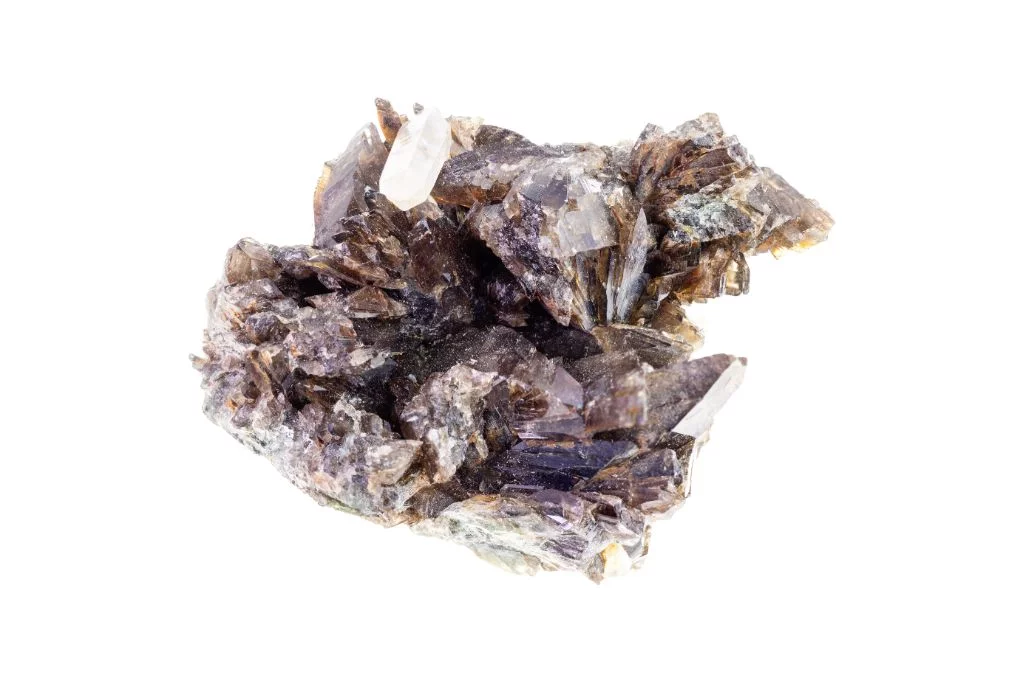Physical Appearance of Axinite
Axinite is a striking mineral known for its distinctive appearance and complex crystal structure. This fascinating gemstone typically exhibits a range of colors, from brown to violet-brown, with some specimens displaying shades of blue, green, or yellow. The most prized axinite crystals often showcase a rich, deep reddish-brown hue that can appear almost purple in certain lighting conditions.
Crystal Structure and Form
One of the most notable characteristics of axinite is its unique crystal habit. It commonly forms in flattened, wedge-shaped crystals with sharp, blade-like edges. These crystals can occur individually or in clusters, creating intricate and visually appealing formations. The mineral’s triclinic crystal system contributes to its complex structure, resulting in crystals with uneven faces and angles.
Optical Properties
Axinite possesses strong pleochroism, meaning its color can change dramatically when viewed from different angles. This optical property adds depth and intrigue to the mineral, as it can appear to shift from brown to blue or green depending on the viewing angle and lighting conditions. Additionally, axinite exhibits a vitreous to subadamantine luster, giving it a glass-like shine that enhances its overall appeal.
Unique Features
What truly sets axinite apart is its rare combination of color, crystal form, and optical properties. The mineral’s blade-like crystals, coupled with its pleochroic nature, create a captivating play of light and color that is highly sought after by collectors and gemstone enthusiasts. Furthermore, axinite’s hardness (6.5-7 on the Mohs scale) makes it suitable for use in jewelry, although its brittleness requires careful handling during cutting and setting.
Historical and Cultural Significance of Axinite
Axinite, a lesser-known gemstone, has a rich history dating back to its discovery in the 18th century. Named after its axe-like crystal shape, this mineral has been prized by collectors and metaphysical practitioners alike. In some cultures, axinite was believed to possess protective properties, shielding its wearer from negative energies and promoting clarity of thought.
Metaphysical Associations
In the realm of crystal healing, axinite is often associated with enhancing memory and increasing one’s ability to concentrate. It is thought to stimulate the mind, making it a popular choice for students and professionals seeking mental clarity. Some practitioners believe that axinite can help balance the chakras, particularly the third eye and crown chakras, facilitating spiritual growth and intuition.
Common Uses and Applications
While not as widely used in jewelry as other gemstones, axinite is sought after by mineral collectors for its unique crystal structure and pleochroic properties. In alternative medicine, axinite is sometimes used in elixirs or placed on the body during meditation to promote mental acuity and emotional balance. Modern crystal therapists may recommend axinite for those struggling with decision-making or seeking to enhance their problem-solving skills.
Benefits and Healing Properties
Proponents of crystal healing attribute various benefits to axinite. It is believed to alleviate stress and anxiety, promote inner peace, and enhance one’s connection to the spiritual realm. Some claim that axinite can help with physical ailments related to the brain and nervous system, though these claims are not scientifically proven. In contemporary practices, axinite is often used as a tool for personal growth, helping individuals to overcome obstacles and achieve their goals through improved mental clarity and focus.

